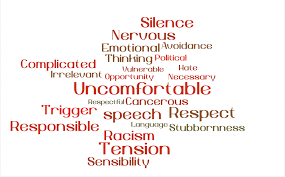Everyone has had the experience of knowing they need to talk to someone about an issue that is sure to cause conflict, negative emotional responses, and even discomfort for one or both parties to the conversation.
In most of these situations, the person initiating the conversation spends a significant amount of time dreading the interaction. This typically includes imagining all the issues that can arise, and anticipating all the negative comments, denials, or challenges that the discussion may cause. This time spent in anticipating the worst case scenario only drives up the anxiety around the conversation and limits how effective you can be in presenting the information.
There is a better and more effective way to approach these difficult conversations. Through preparation and direct communication, everyone involved can be encouraged to express ideas, to address conflict in a proactive and productive way, and to avoid making an already stressful situation much worse.
Take the time spent worrying about the “what ifs” and instead focus that time on the following:
- Clear Message – what is the clear, precise message you want the other person to hear? Another way to think if this is the objective of the conversation, and it needs to be clear in your mind before you start the discussion. What information do you need to get, what information do you need to give to the other person, and what facts do you need to have? What actionable items do you want to have confirmation on at the end of the conversation?
- What is the issue – having precise, objective, and behavior-focused language to describe the behavior provides a starting point for a discussion that is less likely to be taken as a personal attack. For example, starting the conversation by telling an employee he or she is creating a “hostile environment” is more likely to be countered with a defensive statement or a denial compared to stating the observable behavior such as raised voices in the workplace.
- Be in a calm mindset – if you are anxious about the conversation, this comes across as clearly readable by the other person, which results in boosting their anxiety levels. Schedule the conversation first thing in the day or at a time when you can be relaxed, open, and not distracted or stressed by other factors going on around you.
- Pick your place – meeting in a neutral space that is private and comfortable is a better option for a difficult conversation. Meeting in your office or in their office may lead to feelings of being on my turf or your turf, which can also change the conversation’s dynamics.
- Stay open and ask questions – asking questions, particularly “how” and “what” questions, is a great way to get more information and to learn the other person’s perspective. When people are heard, they are more likely to remain calm and to be willing to consider alternatives than if they are only provided a limited option to share their perspective.
Always think in advance about how to end the conversation. What do you need the other person to agree to do, or what outcome do you want from the discussion? This helps to prevent the conversation from cycling around and around without creating any resolution to the issue.

